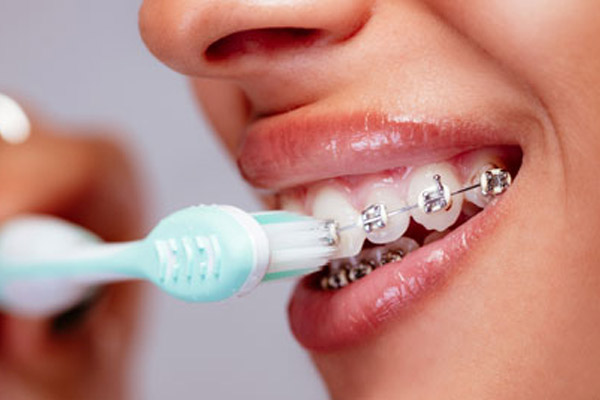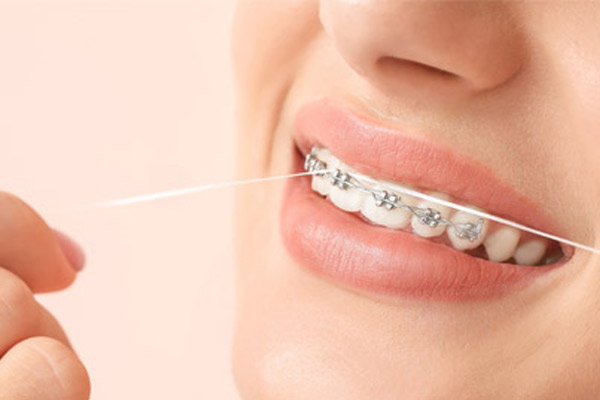It's important to do your part.
During your orthodontic treatment, it is imperative that you maintain a high level of oral hygiene. This includes regular brushing and flossing your teeth. We recommend that you brush and floss after every meal. This will keep your teeth and gums healthy throughout your orthodontic treatment.


Brushing teeth with braces
We recommend you brush your teeth with fluoride toothpaste for at least two minutes after every meal. Brush both the outside and inside surfaces of your teeth using gentle, circular motions; hold the toothbrush at a 45-degree angle to your gum line. Then, brush the chewing surfaces of all your teeth. Finally, it is very important that you pay special attention to cleaning the areas around your brackets or other appliances.
In general, soft-bristle toothbrushes are recommended for all patients, especially those with sensitive teeth. Soft-bristle toothbrushes are available with three kinds of bristle types: extra-soft, soft and medium-soft.
Electric toothbrushes are another option for brushing. You should choose the type of toothbrush that will be easy and comfortable to use at least twice a day.
Flossing teeth with braces
Flossing removes plaque and helps prevent cavities and gum disease. Unfortunately, it can be more challenging to floss when you have braces. Floss threaders make this process easier.
Floss threaders are loops of thin material that make it easier to clean difficult-to-reach areas of your teeth and gums with floss. Floss threaders are disposable, can be used with any regular dental floss, and can be purchased online or at any retail store with a dental section.
A floss threader functions like a needle and a thread: The floss threader is the needle, and the floss is the thread. The first step is to pass a piece of floss through the floss threader. Next, thread the floss using the floss threader between the wire that connects the brackets on your teeth. Once the floss is beneath the wire, you can floss as usual.

Keeping Invisalign® aligners clean
Although Invisalign aligners are disposed of periodically, they still need to be cleaned every day. Here is a suggested daily routine for best care:
- Clean both your teeth and your Invisalign trays every morning when you wake up. Bacteria can build up in your trays overnight, so this step is particularly important. It should also be repeated before bed.
- Rinse your aligners every time you remove them from your mouth. You should rinse your aligners with cool water every time you take them out. This will remove dried saliva. (Don’t rinse with hot water because it could cause the trays to bend or warp.)
- Always brush and floss your teeth before replacing the aligners. Otherwise, food and bacteria could become trapped under the aligners and cause plaque to form on your teeth.
- Soak your trays daily. A good way to clean your aligners is to soak them in Invisalign cleaning crystals or a denture cleaner, like Efferdent. You should never soak your aligners in mouthwash or hot water. Once you’re done soaking your trays, brush them with a soft-bristled toothbrush.
- An alternative to soaking your aligners is brushing them with a soft-bristled toothbrush and a little bit of liquid handsoap, then rinsing them thoroughly. Be sure not to use the same toothbrush you use on your teeth.
